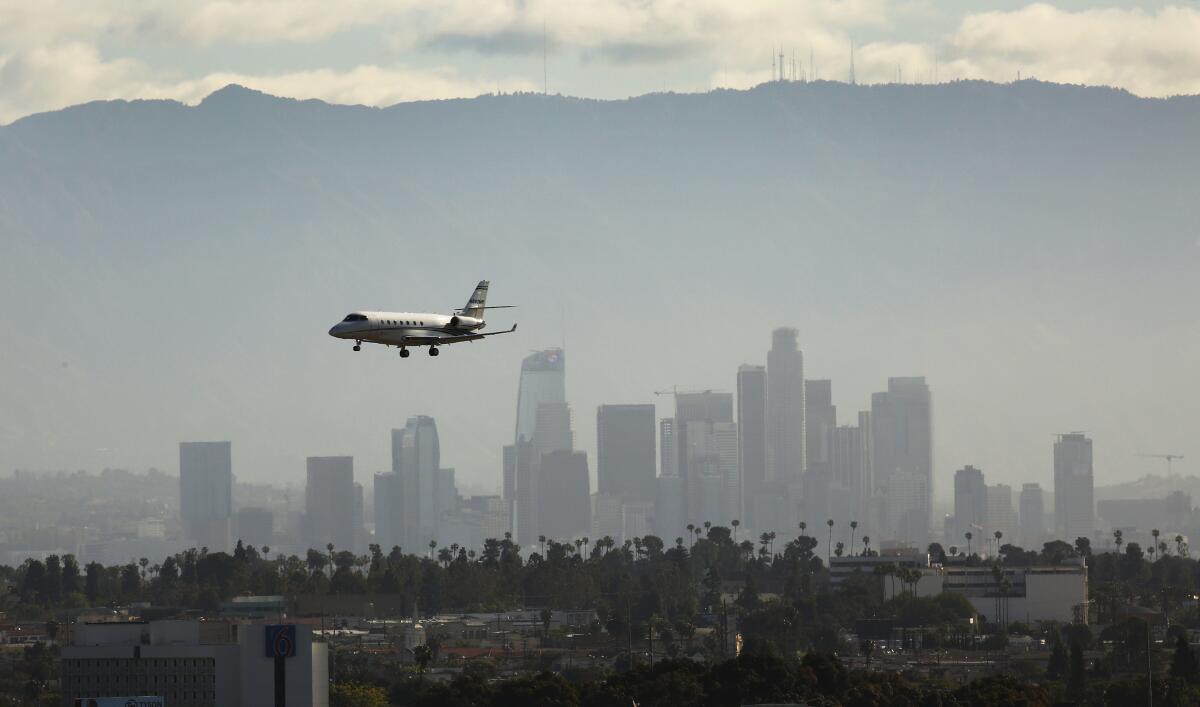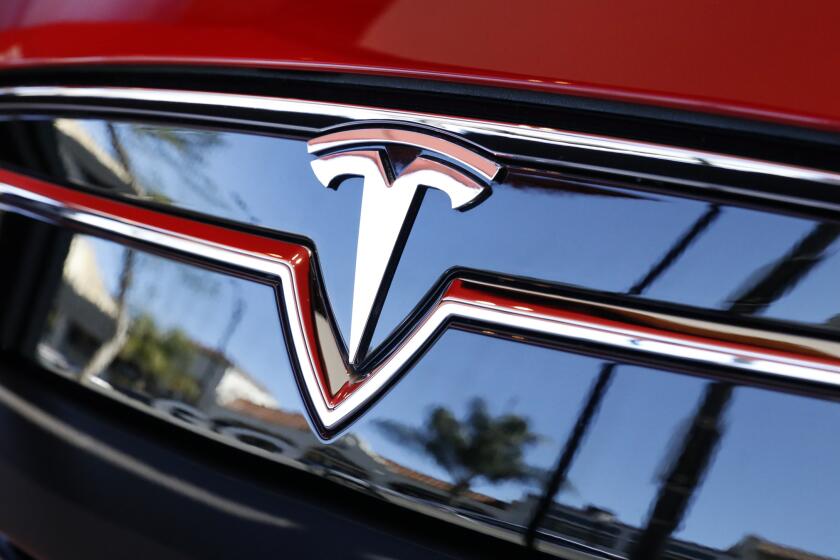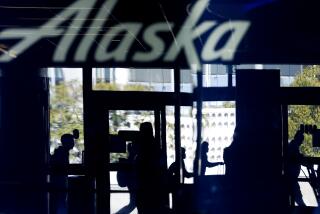Aviation turmoil reduced but not resolved by latest 5G accord

- Share via
For the third time in less than two months, the U.S. aviation system on Tuesday faced the threat of widespread flight disruptions over potential 5G interference, only to get a temporary reprieve.
A last-minute accord between wireless telephone companies and aviation authorities averted major disruptions but didn’t eliminate them. Left to be worked out is a long-term solution that will enable mobile phone companies to take advantage of super-fast wireless technology without interfering with aviation.
AT&T Inc. and Verizon Communications Inc. agreed Tuesday to temporarily delay switching on hundreds of 5G cell towers near U.S. airports in talks with the Federal Aviation Administration and other government officials. The towers broadcast on frequencies adjacent to those used by radar altimeters that help aircraft land in poor weather.
The agreement calls for temporary no-5G buffer zones around airports while federal regulators and industry groups try to reach a permanent solution without repeating the crisis in coming months.
The case represents a milestone in the increasingly confusing world of automated driving.
President Biden issued a statement Tuesday praising the delay. “This agreement will avoid potentially devastating disruptions to passenger travel, cargo operations, and our economic recovery, while allowing more than 90% of wireless tower deployment to occur as scheduled,” Biden said.
Talks will continue, he added, “until we close the remaining gap and reach a permanent, workable solution around these key airports.”
The wireless companies paid more than $80 billion for access to the frequency band, allowing them to offer faster 5G mobile phone services, and are eager to put them to use. The Federal Communications Commission had approved the transfer of the frequencies from other uses to the companies after concluding there was no threat to aviation safety.
FCC Chairwoman Jessica Rosenworcel called Tuesday’s agreement “welcome news.”
“We know that deployment can safely coexist with aviation technologies in the United States, just as it does in other countries around the world,” she said in a statement. “The FAA has a process in place to assess altimeter performance in the 5G environment and resolve any remaining concerns. It is essential that the FAA now complete this process with both care and speed.”
The FAA on Wednesday announced that it had exempted 62% of the U.S. fleet from 5G-related landing restrictions. The agency said five altimeter models qualify for exemptions from low-visibility landing restrictions, up from only two as of Sunday. That helped keep the effect on the aviation system to a minimum after several carriers had warned of potential cancellations.
Most Boeing Co. and Airbus jets used to carry the bulk of U.S. passengers are now at least partially cleared, but no regional jets were among those listed.
“The new safety buffer announced Tuesday around airports in the 5G deployment further expanded the number of airports available to planes with previously cleared altimeters to perform low-visibility landings,” the FAA said in a statement.
“Even with these approvals, flights at some airports may still be affected,” the agency said. “The FAA also continues to work with manufacturers to understand how radar altimeter data is used in other flight control systems.”
Southwest Airlines Co. canceled 15 West Coast flights — about 0.5% of its daily schedule — as a result of 5G issues related to visibility or weather, the company said in an email. There were no U.S. commercial airports suffering unusually large numbers of delays or cancellations, according to flight tracking service FlightAware.
Even with the measures promised by AT&T and Verizon, there may still be restrictions on flights. If certain aircraft have a potential for interference, the FAA may still impose limits on certain types of landings and other flight procedures.
Boeing had warned operators that one of its most popular long-range jets, the 777, as well as its 747-8 jumbo, might not be allowed to land at some U.S airports, prompting a spate of cancellations from carriers including Japan Airlines Co. and ANA Holdings Inc. Korean Air Lines Co. announced it had rearranged its fleet on routes to the concerned airports to avoid cancellations.
The FAA shortly afterward concluded that the 777 was sufficiently protected to allow flights to continue. JAL said it was resuming flights to the U.S. starting Thursday.
Despite the detente created by the latest compromise, feelings among some still ran high. FCC Commissioner Brendan Carr called the process “chaotic and haphazard” and said he blamed the Biden administration.
The best case scenario for resolving the 5G situation would be if analysis shows that altimeters aren’t at risk from 5G signals, said Peter Lemme, a former aircraft electronics engineer who is a consultant in satellite communications.
“The moving target is exactly what interference levels will be caused,” he said.
That painstaking work is being conducted by aircraft manufacturers along with the FAA and the wireless companies. Until that’s completed, the FAA will have to be cautious and avoid risks, he added.
“The last thing we want to do is find out there was a problem by having an incident,” he said. “That would be unacceptable.”
Longer term, the FAA and the aviation industry have agreed that many or all radar altimeters will have to be replaced. That is a daunting process as well. The industry has been working on developing new standards for the altimeters for two years and it will take several more to get them approved by the FAA and to replace them.
“The best solution is there isn’t any interference,” Lemme said. “But if there is in fact a real problem, it’s going to be ugly.”
More to Read
Inside the business of entertainment
The Wide Shot brings you news, analysis and insights on everything from streaming wars to production — and what it all means for the future.
You may occasionally receive promotional content from the Los Angeles Times.











